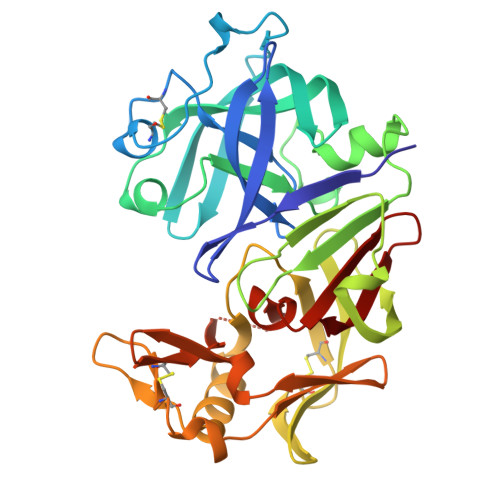X-ray analyses of aspartic proteinases. IV. Structure and refinement at 2.2 A resolution of bovine chymosin.
Newman, M., Safro, M., Frazao, C., Khan, G., Zdanov, A., Tickle, I.J., Blundell, T.L., Andreeva, N.(1991) J Mol Biology 221: 1295-1309
- PubMed: 1942052
- Primary Citation of Related Structures:
4CMS - PubMed Abstract:
The structure of calf chymosin (EC 3.4.23.3), the aspartic proteinase from the gastric mucosa, was solved using the technique of molecular replacement. We describe the use of different search models based on distantly related fungal aspartic proteinases and investigate the effect of using only structurally conserved regions. The structure has been refined to a crystallographic R-factor of 17% at 2.2 A resolution with an estimated co-ordinate error of 0.21 A. In all, 136 water molecules have been located of which eight are internal. The structure of chymosin resembles that of pepsin and other aspartic proteinases. However, there is a considerable rearrangement of the active-site "flap" and, in particular, Tyr75 (pepsin numbering), which forms part of the specificity pockets S1 and S1'. This is probably a consequence of crystal packing. Electrostatic interactions on the edge of the substrate binding cleft appear to account for the restricted proteolysis of the natural substrate kappa-casein by chymosin. The local environment of invariant residues is examined, showing that structural constraints and side-chain hydrogen bonding can play an important role in the conservation of particular amino acids.
Organizational Affiliation:
Department of Crystallography, Birbeck College, University of London, U.K.


















